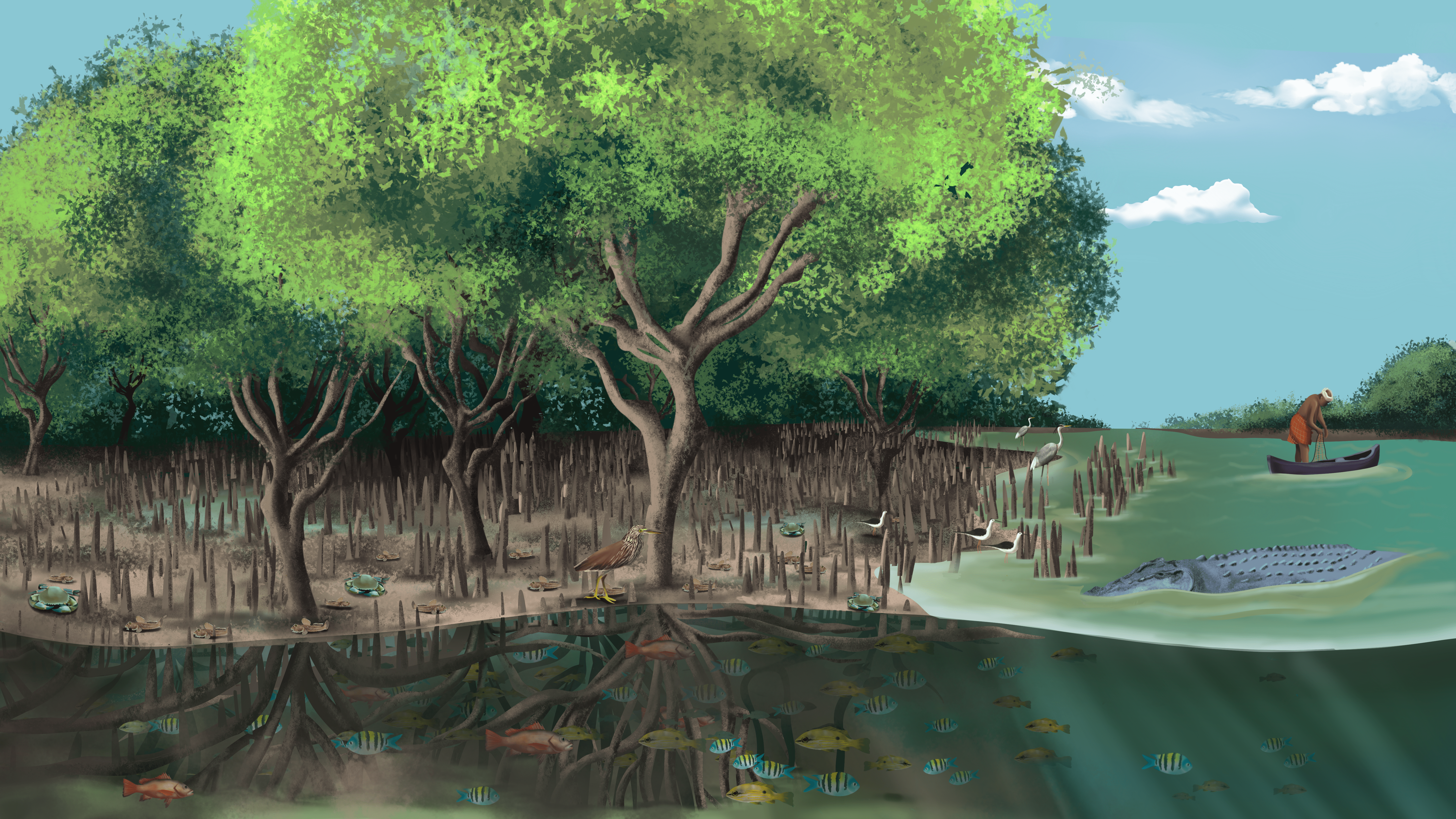Mangrove ecosystems are formed by a network of shrubs and trees that grow along saline or brackish-water coastlines in tropical and subtropical regions. They are transitional ecosystems that lie between the land and the sea. Mangrove trees have unique adaptations that enable them to thrive in a high-flux, saline environment. They have a complex salt filtration system and an elaborate root system. Some have pneumatophores (air-breathing roots) that grow out of the soil to facilitate gaseous exchange. Other species have buttress roots or stilt roots that can offer support in loose soil. Mangroves in India account for only 0.15% of the country's geographical area, but support a rich diversity of species. The Sundarbans in West Bengal are the largest mangrove region in the world and a UNESCO World Heritage site.

Barracuda, snappers, shrimp, clams, crabs, saltwater crocodiles, sea birds
Mangroves form a crucial barrier against the ocean’s forces, often acting as the first defence against tsunamis, storm surges, and cyclones. Due to their extensive and elaborate root systems and lush canopy, mangrove ecosystems harbour a rich biodiversity and are important breeding, nesting, and nursery sites for several marine species. The deep, strong roots stabilise and bind the soil together, preventing erosion. It is estimated that mangroves sequester five times the amount of carbon tropical rainforests store!